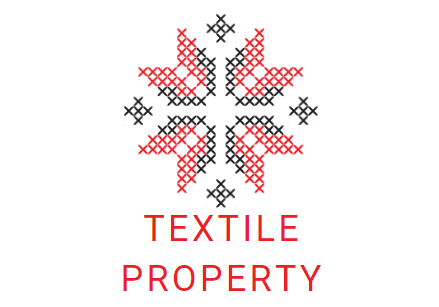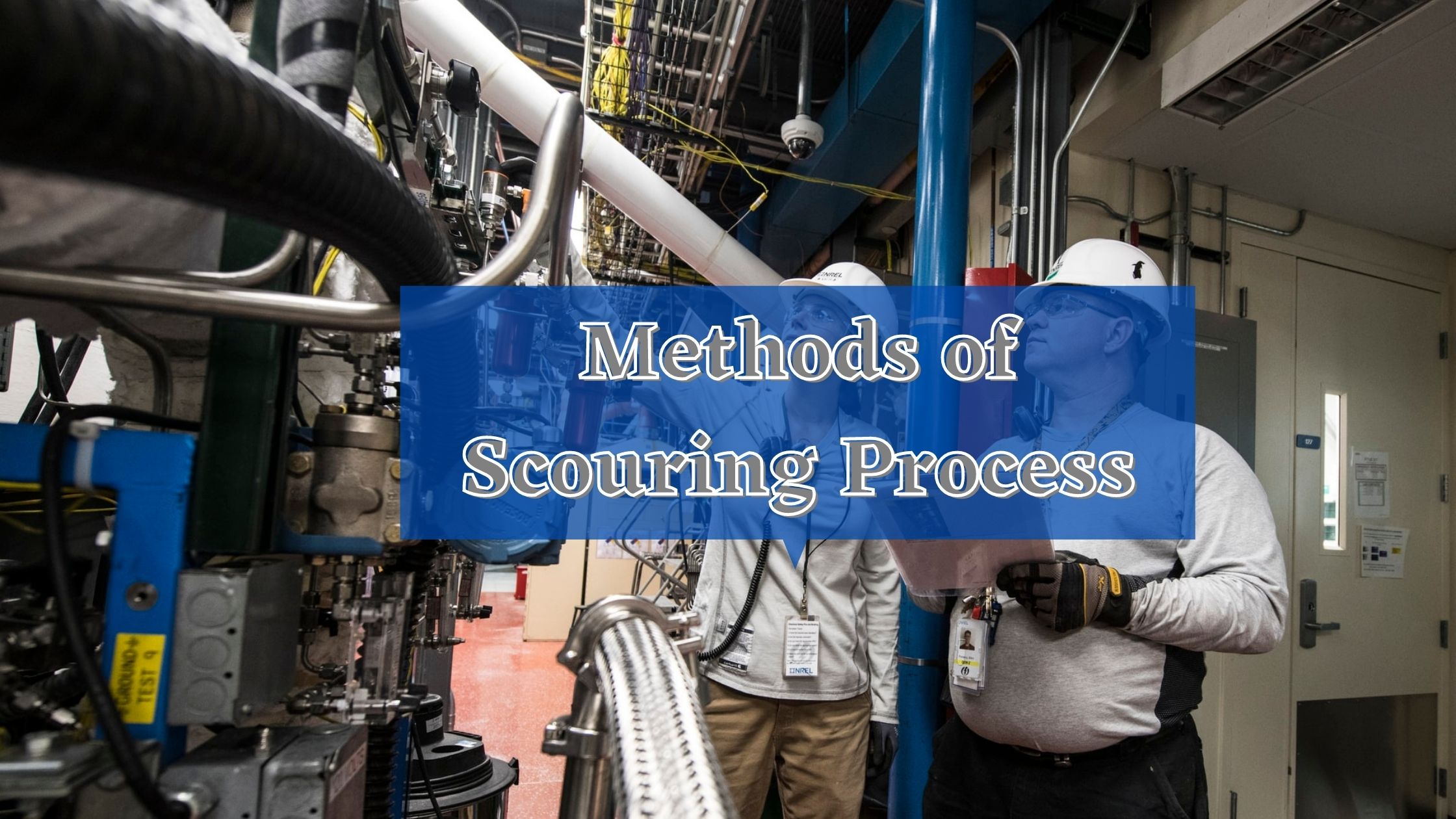Scouring is the process to remove natural and foreign impurities from the fabric and preparing the fabrics for the next subsequent process. This process makes the fabric hydrophilic so that it can absorb the chemicals and dyes properly. In this article, we will discuss the methods of the scouring process.
The non-continuous scouring process consists essentially of circulating hot alkali liquor through the cloth in a vessel called kier.
The continuous scouring and bleaching in the J-Box have been established after 1960s. The continuous process is based on the impregnation of the fabric in an alkali solution followed by the steam aging stage, the fabric being either in rope form or open width form.
Kiers have given way to J-Boxes and J-Boxes are discarded in favor of open width scouring which requires only 2-15 min having very high production. In comparison, kiers take 6-12 h depending upon the number of impurities.
Two Methods of Scouring Process
There are two methods of scouring processes are available. They are described below:
- Continuous process: J-box machine
- Dis-continuous process: Kier boiler, Winch or Jigger machine
Batch Type or Discontinuous Process in Brief
Batch type or discontinuous scouring process in (rope form) are carried out in:
- Low pressure kier
- High pressure kier
- Jafferson-Walker’s kier
- Gebauer kier
Batch Type Scouring Machine (Open Width Form) is carried out in:
- Mather and Platt’s horizontal kier
- Jackson kier
- Jig process
Among all of these the most used process is high pressure kier boiler. In this article, we will cover this type of kier boiling method.
Machine Profile for Batch Process
- The prototype of a modern high pressure kier that has multi-tubular heater is often referred to as Walsh’s kier and considered to be the best.
- This machine is about 9 inch high and 6.5 inch in diameter with a 2 tons capacity.
- This machine is mounted on R.C.C columns.
- The maximum working pressure for this machine is 40 lb/in2 (2.812 kg/cm 2) at 141°C and is composed of mild steel plates with countersunk rivet heads inside to give a smooth surface.
- Various mountings and accessories like pressure gauge, safety valve, blow-off valves for air and steam, steam traps, liquor level indicators, and draincock are provided with this machine.
Recipe for Batch Process Scouring
| Chemicals | Amount needed |
| · Caustic soda
· Soda ash · Wetting agent · Sequestering agent · Temperature · M:L | · 0.5-2.4 g/L
· 0.5-1.0 g/L · 0.5-1.0 g/L · 0.5-1.0 g/L · 120-130°C · 1:100 |

Image Source: Basic Principle of Textile Coloration
Process Description
- On perforated false bottom the substrate needs to be plaited. No matter, it can be done either manually or mechanically.
- An alkaline solution is prepared that contains caustic soda (2 to 3%), sodium silicate (0.75 to 1%), sodium carbonate (0.5 to 1%) and wetting agent (0.1%) and the substrate is saturated in this solution at the time of piling.
- From the underside of kier, enough scouring liquor is introduced. Thus entrapped air is swept out to prohibit the oxy-cellulose formation.
- Then the lid is closed but the air valve is kept open.
- Turning on the steam, the liquor is circulated with the help of centrifugal pump.
- High pressure kier operates at about 130°C (2.109 kg/cm 2) for about 8 to 10 hours with a liquor ratio 5:1 to 6:1.
- After scouring the draincock is opened at reduced pressure (5 to 6 lb/in 2) and equivalent amount of hot water is admitted from the top.
- Once the cold water circulation on the goods is done, they are removed and transfer to the rope machine for washing.
- From the bottom of kier, the withdrawal of the liquor is carried out that is forced through the heater. A distributor is then used to spread over the substrate.
Fabric that is to sell at white state is given two boils whereas the fabrics intended for printing are given a single boil.
Advantages & Dis-Advantages of Batch Process
| Advantages | Dis-advantages |
| · Suitable for small orders
· Fabric can be scoured in both open width and rope form. | · Not economical for large orders
· Time requirement is more than continuous process |
Continuous Process in Brief
The continuous scouring process can be carried out by the following machines. A continuous process is rarely followed in the industry. But among all of these J-box machine is used mostly. So, we will cover j-box machine here.
- Saturator- J-Box-rope washer
- Open width roller steamer
- Vaporloc system
- High pressure Klienewefer roller steamer
- Conveyer storage steamer system
- Roller bed steamer with pre-swelling zone
Saturator- J-Box- rope washer
This procedure can be divided into 4 stages:
- Saturator
- Pre-heater
- J-box
- Washing unit
Recipe for Continuous Process
| Chemicals | Amount needed |
| · Caustic soda
· Wetting agent · Sequestering agent · Impregnation temperature · Storing time in J-box · J-box temperature | · 5 g/L
· 1-4.5 g/L · 1-5 g/L · 70-80°C · 8-10 min (open width form) 40-60 min (rope form) · 100-105°C |
Process Description of Continuous Process
- Saturator: If you are thinking about continuous machine, a series of j-box can be used for scouring or desizing. The desized and washed cloth is first saturated with scouring solution at about 70-80°C in a saturator.
- Pre-heater: The cloth before entering J-Box is rapidly pre-heated by means of steam in a U-shaped heating tube. Where the temperature range is 110-120°C. In case of Becco system, there is no pre-heater and the cloth is directly heated in the J-Box which is used as a steamer
- J-box:
- Once the padding is completed, the substarte passes through the pre-heater. Then it enters into Du Pont type J-Box and kept for 40-60 min in plaited form at 100°C.
- No friction occurs on the moving substrate. This is so because the internal area of the j-box is very smooth.
- In-stead of rope form a multi-stage J-Box in open width form can also be used with a dwell time of 8-10 min in J-Box.
Washing unit: The scoured fabric is washed outside heaving a counter current arrangement at the temperature of about 70-80°C.

Image Source: Basic Principle of Textile Coloration
Advantages & Dis-Advantages of Continuous Process
| Advantages | Disadvantages |
| · Fabric is scoured in both open width and rope form.
· Suitable for large orders · Less time required | · Not economical for large orders |
Wrapping It Up!
Scouring is a must procedure that should be carried out in the case of natural fibers. Otherwise, proper dyeing can’t be possible. Without scouring, no wax or foreign materials won’t come off from natural fibers and that will lead to patchy dyeing.
You can also check: What is scouring? A comprehensive look!


sir please ,can you provide the refrence of this.
Actually i m doing assignment thats why.